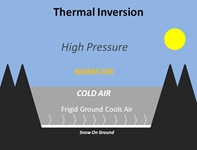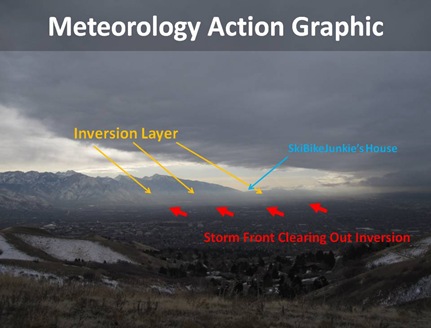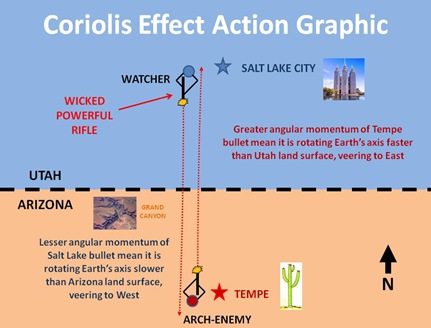Know what I wish*? That I could sing. Really sing, like belt out a tune. Like I would open my mouth, break into song, and people would just be astounded and moved and impressed all at the same time. I would sound more or less like this (skip to 0:28, where he walks out onto the balcony):
*To be clear, that’s not like my only wish. It’s not even in the top 3. The top X wishes would be big-picture, change-the-world type wishes, like World Peace and End Disease or End Hunger or Don’t Wreck The Planet- stuff like that. And really, the Singing Wish wouldn’t even be my top Personal Wish. I’m not even sure it would be in the top 10. I’d probably wish for a bunch of money, or to speak another language perfectly, or to know the Secret Of The Universe, or maybe even just play the ukulele really well first. But it’d be really cool if I could sing well, too.
My singing would be a frequent topic of conversation throughout my social circle. Maybe OCRick would be out skiing or something with say, Hunky Neighbor or Clean Colin, and he’d say something like, “Hey, you know who can really carry a tune? Alex, that’s who. Man, that guy has a voice!” And Clean Colin would say, “You’re telling me! The guy is an amazing singer… he really could have been a professional.” People would make sure to invite me to parties and other events, because they knew there’d be a good chance I’d break into song, which of course would make the event a total success.
But my friends never have that conversation. I never know for sure what they say about me*, but I suspect it’s more like this:
Clean Colin: Hey, listen up. Tell your friend not to bring along that guitar again this weekend. I do not want to sit around the campfire and listen to Alex mangle Neil Young again after he’s had a couple of beers…
OCRick: You’re telling me. It’s just bizarre that a guy who sings so badly seems to always want to start doing it…
*Actually, I’m pretty sure they say, “What is he doing all that blogging for? What, is he going through some kind of mid-life crisis or something?”
Yes, I am. And this expression of it is way cheaper and less disruptive than a sports car, Argentine mistress, or joining an ashram.
And that’s the tragedy. Because I really like singing. But I am doomed to do so almost exclusively alone, usually while driving. It’s a tragedy not only because I enjoy it, but because singing is really one of the defining characteristics of being human.
All About Singing
Wait, wait- don’t click away! No, I’m not getting all sappy/new-agey/music-makes-the-world go-round or anything. What I mean is that singing- or more specifically the range and flexibility of the human voice- is arguably the best of any mammal in the world.
These days I’m thinking a lot about music because I’m running a lot, and when I run I listen to tunes on the iPod. I tend to be semi-OCD in my listening habits. I’ll listen to one artist/ group/ album over and over, like practically every other time I run, for maybe 2 weeks, and then I’ll drop it cold. Up until last week, for example, I was really into a Jayhawks phase. On any run over 4 miles I’d listen to the them, usually parts of Hollywood Town Hall, or Tomorrow The Green Grass.  Before that I was running over and over to the Clash’s London Calling* for a couple of weeks. Then last week I dropped the Jayhawks cold, and switched over to my current obsession, which I’ve been listening to on runs for the past week, and which is- I swear to God I am not making this up- Mozart’s Don Giovanni.
Before that I was running over and over to the Clash’s London Calling* for a couple of weeks. Then last week I dropped the Jayhawks cold, and switched over to my current obsession, which I’ve been listening to on runs for the past week, and which is- I swear to God I am not making this up- Mozart’s Don Giovanni.
*Because Rudie Can’t Fail, Clampdown and The Guns of Brixton are totally kick-ass running tunes.
Tangent: About 5 years ago I went through this bogus Zen-Nietzsche-purity-whatever-baloney phase where I made a big deal about never listening to music while running, because I somehow felt that listening to music was in some way “masking” the experience of the run*. In early 2004 I ran hundreds and hundreds of miles training for a marathon- in silence. 2 weeks before the event I injured myself and had to skip it. Months later, when I finally started running, I started listening to tunes again and wondered what the hell I’d been thinking.
*Seriously, what was up with me? All I can say is that by one’s mid-40’s, pretty much everyone has some period of their life that they look back on with total embarrassment. The running-in-silence thing is mine. Oh yeah, and that whole first marriage thing.
You’ve probably heard something over the years about researchers teaching chimpanzees and gorillas to communicate via sign language. It’s a fascinating subject, and highly controversial, with strong opinions as to whether or not the apes are truly communicating via language as humans do. But here’s something nobody’s arguing about- teaching apes to communicate in spoken human language. Nobody’s arguing about it because they know it’s impossible; apes don’t have our voice-boxes.
We’ve previously talked about several aspects in human evolution since the human-chimpanzee split back 5-7 million years ago, including neocortical development, hairlessness, facial hair, parasites and endurance running. Here’s another one: At some point in the last million years* our larynx descended to a lower position in the throat, enabling the range of sounds we can make today.
*Probably within the last 350,000.
 Side Note: To be clear, the descended larynx is just one of several physiological features to have made modern human speech possible. But it’s the one I’m focusing on today for reasons that will be apparent in a moment.
Side Note: To be clear, the descended larynx is just one of several physiological features to have made modern human speech possible. But it’s the one I’m focusing on today for reasons that will be apparent in a moment.
Our descended larynx is a great example of an exaptation, which is when natural selection modifies a structure or organ which originally evolved for a different purpose. All mammals have a larynx. It serves to protect the trachea, and often, but not always, for sound production. In the vast majority of mammals, the larynx is located very high in the throat, close to nasal passages, where it can effectively separate breathing from eating and prevent food items from traveling down the trachea. In humans, our larynx is located so much lower that we’ve lost that ability, which is why we’re practically the only(?) animal to routinely choke to death.
Initially this appears to be a lousy deal; nearly all of us have experienced or witnessed at least a couple of choking scares, where a potential victim required assistance. It seems like a big price to pay, and the only explanation for it was that the benefits of descended larynx outweighed- in the long, reproductive run- the benefits of choke-protection. Speaking – and maybe singing- was obviously important in our evolution.
 Side Note: My 2-month-old niece was with us over the holiday weekend. She’s delightful, low-maintenance, largely uncomplaining baby, but like most infants, she’s often hungry. In all her feedings- which of course are entirely liquid, and which she receives while in a reclined position, she never once coughed or gagged. Think about that. If you spent a 2 or 3 hours a day lying back drinking liquids, how often would you gag? Pretty often, I’m guessing. In human babies the larynx is high in the throat, like in an ape, and provides the same tracheal protection they enjoy.
Side Note: My 2-month-old niece was with us over the holiday weekend. She’s delightful, low-maintenance, largely uncomplaining baby, but like most infants, she’s often hungry. In all her feedings- which of course are entirely liquid, and which she receives while in a reclined position, she never once coughed or gagged. Think about that. If you spent a 2 or 3 hours a day lying back drinking liquids, how often would you gag? Pretty often, I’m guessing. In human babies the larynx is high in the throat, like in an ape, and provides the same tracheal protection they enjoy.
Descended larynxes also can be found in some aquatic mammals and- oddly- some species of deer, which may also possibly realize vocalization benefits.
It’s been claimed that whales, wolves and maybe even mice* sing, but no other mammal sings anything like we do. Though human voices can be enchanting in many different styles, probably no genre shows off the human voice better than classical opera.
*Ultrasonically, if at all.
 I’m not a regular opera fan, but I was sucked into Don Giovanni by the overture, which I’ve long enjoyed*. When I finally, absent-mindedly, let the recording continue, I found myself mentally humming along to the themes I’d come to enjoy in the overture, but now reinforced by the stunning power of human voices- both male and female- at their very finest.
I’m not a regular opera fan, but I was sucked into Don Giovanni by the overture, which I’ve long enjoyed*. When I finally, absent-mindedly, let the recording continue, I found myself mentally humming along to the themes I’d come to enjoy in the overture, but now reinforced by the stunning power of human voices- both male and female- at their very finest.
*I’ve been a half-assed Mozart fan for years, and am especially partial to symphonies #40, 41 and 25, as well as his utterly fantabulous Quintet for Clarinet and Strings.
 I’m going on about Mozart here, but I should give credit to the great Lorenzo Da Ponte, who authored the libretto, which is what the lyrics are called in an opera. Most classical operas were composed in collaboration between the composer, who developed the score, and the librettist. (A notable exception was Wagner, who wrote his own libretti.) A libretto can be written in any language, but Italian dominated the libretti of most serious operas in the 18th century.
I’m going on about Mozart here, but I should give credit to the great Lorenzo Da Ponte, who authored the libretto, which is what the lyrics are called in an opera. Most classical operas were composed in collaboration between the composer, who developed the score, and the librettist. (A notable exception was Wagner, who wrote his own libretti.) A libretto can be written in any language, but Italian dominated the libretti of most serious operas in the 18th century.
Da Ponte authored libretti for 11 different composers, and also wrote those for Mozart’s Figaro and Cosi fan tutte. Cool Factoid: Late in life Da Ponte emigrated to the U.S. and became an American citizen.
Side Note: Almost certainly none of us alive now will ever hear the most remarkable human voice. Though the creation of castrati was a barbaric custom that is thankfully no more, the voice of a castrato was different than any singing voice today, combining the range and pitch of a woman’s voice with the power and strength of a man’s. A handful of recordings of just one castrato- Alessandro Moreschi- survive, and these were made late in his career, when he was past his prime, and Moreschi was never considered a great castrato. Still, you can pick up a sense of the power of the castrato voice in the clip below.
Yes, the human voice is amazing, but like another human capability that is exceptional among mammals- vision (both color and foveal)- it comes up looking pretty lame when compared to- that’s right- birds.
Compared with the near-dearth of singing mammals, the plethora of singing birds is stunning. Think about it- how many species of birds have beautiful voices? Like thousands! Birds sing for courtship, alarms and other reasons, but mammals have these concerns and needs as well. Why do so birds sing so much better?
Birds don’t have a descended larynx; they have something altogether better, something we don’t have- a syrinx*. The syrinx is a sound-producing organ located well below the larynx, right at the junction where the trachea branches toward the 2 lungs. A syrinx has no vocal chords; rather the sound is generated by the vibrations of a little tympanic membrane attached to a small air sac, and pitch and tone is modulated and amplified by muscles that control the tension of the syrinx/tracheal walls and the aperture of the bronchial openings.
*Confusingly, humans can have something called a “syrinx”, but it’s a completely different- and not a good- thing. Specifically it’s a fluid-filled cavity within the spinal cord or brainstem.
 A syrinx has a couple of sonic advantages over a descended larynx. Because it’s located at the tracheal junction, it can (in some birds) produce more than one concurrent tone. The flexibility of the syrinx provides birds with a range of possible sounds we don’t come close to matching. Parrots and Myna Birds regularly mimic human speech, but we can’t very well mimic their calls. But maybe the most impressive advantage is sheer efficiency.
A syrinx has a couple of sonic advantages over a descended larynx. Because it’s located at the tracheal junction, it can (in some birds) produce more than one concurrent tone. The flexibility of the syrinx provides birds with a range of possible sounds we don’t come close to matching. Parrots and Myna Birds regularly mimic human speech, but we can’t very well mimic their calls. But maybe the most impressive advantage is sheer efficiency.
If you’ve ever tried to carry on a conversation or relate a story while biking or running uphill, you know how hard it can be to speak clearly while breathing heavily. We all take this for granted, but think about it for a moment: why should it be so hard? It’s just “talking”. You’re riding a bicycle uphill, burning maybe 300+ watts already. Why should the minimal effort of just making a little noise put you over the top?
Because speaking is wildly inefficient. The human larynx converts something like 3% of energy received into sound. With the avian syrinx, the figure is closer to 100%.
Side Note: This comparison isn’t quite fair, if only because avian lungs are way more efficient than ours as well. Human lungs- like those of all mammals- are a dead-end deal. Air goes in, fills up the bag, then goes back out the same way. No matter how fully we exhale, we always re-inhale some of the- now oxygen-poor- air that was in our lungs last breath around. Birds don’t have this problem, because their lungs are 1-way. Air enters at one end (bottom/rear) and exits the other (top/forward.) The whole avian respiration system is more complicated than this, with a number (usually 9) of strategically-positioned air sacs working in tandem with the lungs, but the short version is that no bird ever inhales its own “backwash.” This lung efficiency is doubly important for birds because not only do they breathe heavily while flying, but often do so at significant altitude.
The title character of Don Giovanni is an incorrigible rascal and seducer, having wooed a couple of thousand women across Europe. Early on in the opera he murders the father of one of his targeted conquests. At the big finish, the grave-statue of the father comes to life and drags the unrepentant Don Giovanni down into the flames of Hell. I don’t believe in ghosts or animated statues or Hell, but it’s a fabulous ending.
 Similarly, I don’t believe that a divine creator directed evolution, but the whole issue of song makes me think. At this point in the project, after learning what I have about birds, their incredible vision, remarkable brains, superior respiration and incredible voice-boxes, if I were a believer, I’d be getting suspicious that perhaps they- and not us- were her favored children.
Similarly, I don’t believe that a divine creator directed evolution, but the whole issue of song makes me think. At this point in the project, after learning what I have about birds, their incredible vision, remarkable brains, superior respiration and incredible voice-boxes, if I were a believer, I’d be getting suspicious that perhaps they- and not us- were her favored children.
Wow. That year went by quick. Hope it was a good one for you, and that this blog managed to enlighten, entertain or just help you kill some time now and then during its course. Happy New Year.













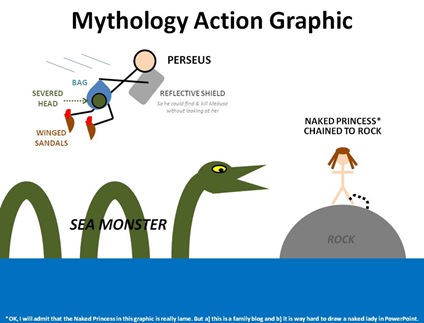









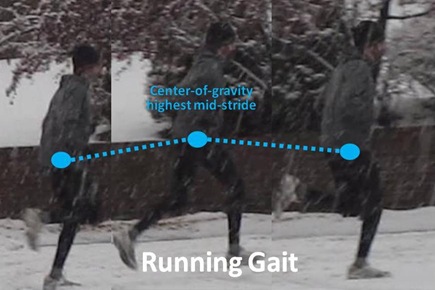




 So when and why did this endurance running capability come about?
So when and why did this endurance running capability come about? 



